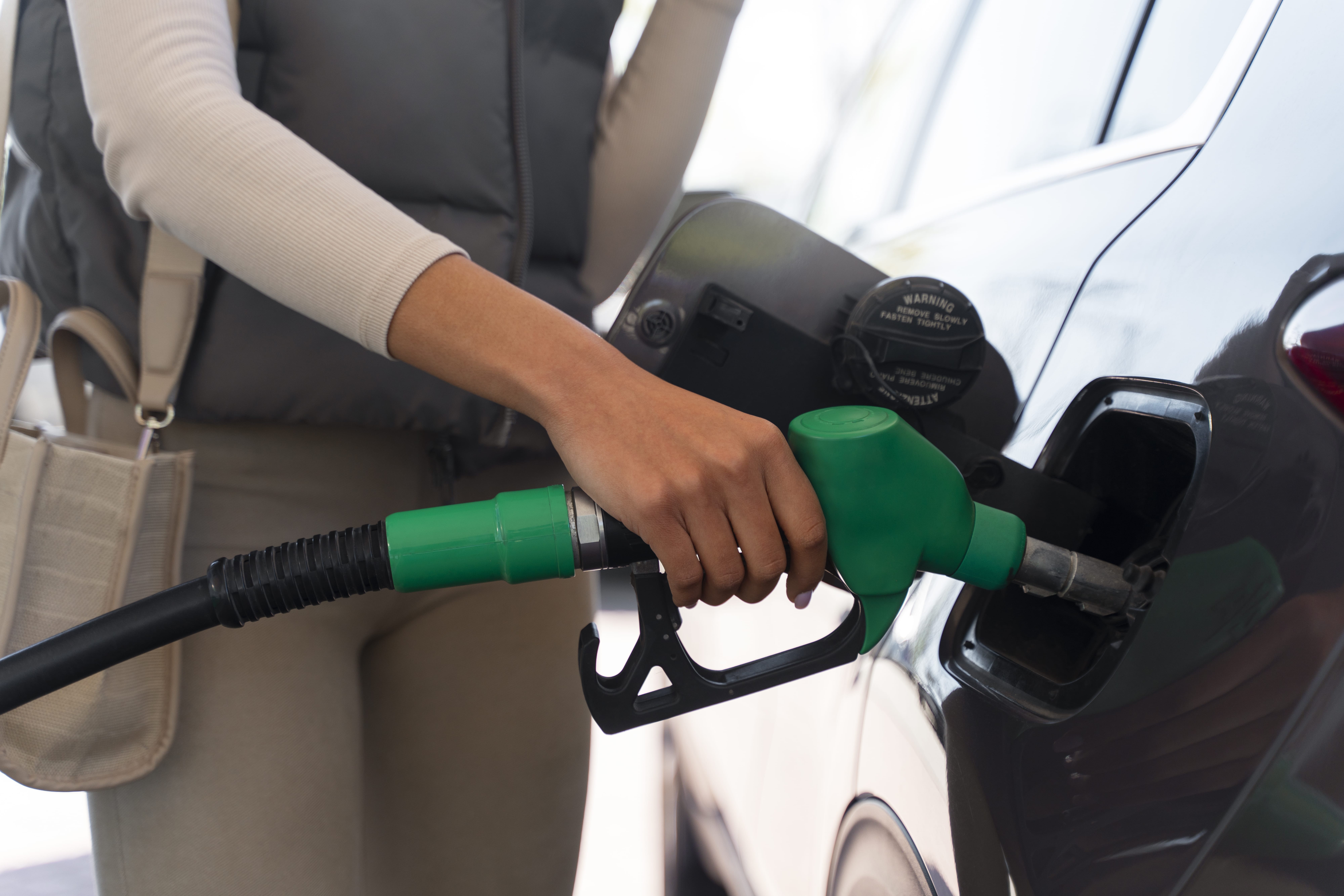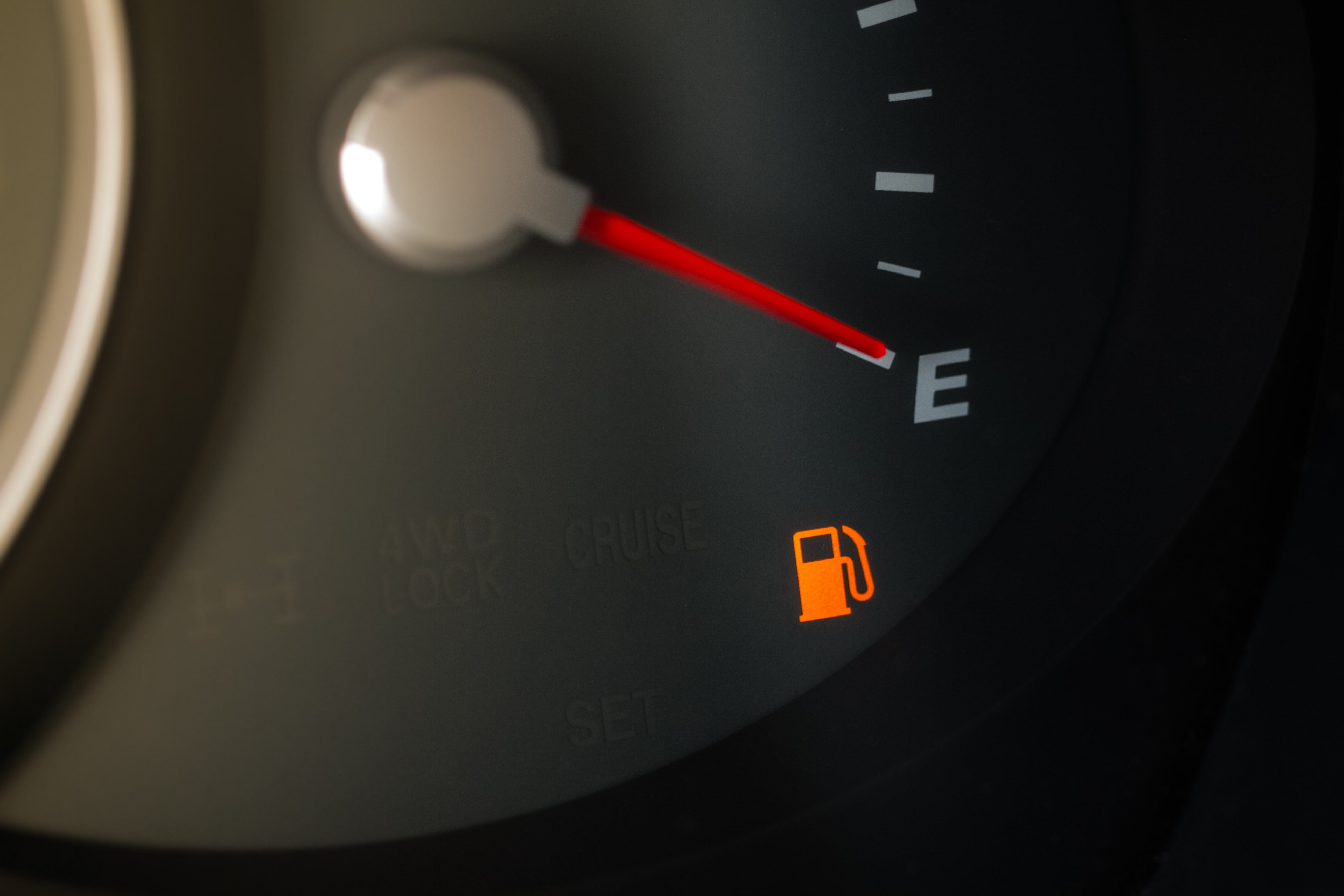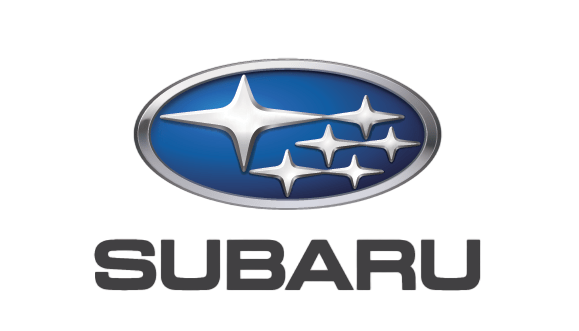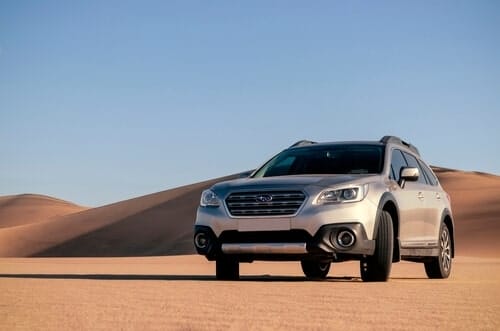The Short Answer: What fuel does the Subaru Outback use in Australia?
| Engine | Minimum Fuel Grade | Tank Size | ADR Fuel Economy |
| 2.5-litre (AWD, Sport, Touring) | 91 RON unleaded | 63 litres | 7.3 L/100 km |
| 2.4-litre XT (Sport XT, Touring XT) | 95 RON premium | 63 litres | 9.0 L/100 km |
All current Subaru Outback models in Australia run on petrol. No diesel. No hybrid. Just two very capable petrol engines with different fuel requirements.
Pick the right pump: Your quick decision guide
You shouldn’t need a degree in chemistry to fill your tank. Here’s the simple version:
2.5-litre Outback (AWD, Sport, Touring)
- Yes: 91 RON unleaded
- Yes: 95 RON premium
- Yes: 98 RON premium
- Yes: E10 (~94 RON) – if your model year is compatible
2.4-litre Outback XT (Sport XT, Touring XT)
- No: 91 RON – too low
- Yes: 95 RON premium (minimum required)
- Yes: 98 RON premium
- No: E10 (~94 RON) – doesn’t meet 95 RON minimum
The golden rule? Never go below your engine’s minimum octane rating. Going higher won’t hurt; your engine just won’t magically unlock bonus horsepower if it wasn’t designed for it.
Picture this: you’re halfway to Margaret River, running low on fuel, and suddenly you’re second-guessing everything. Is 91 RON okay? Should you splurge on 98? What even is E10, and why is it ten cents cheaper?
We see this confusion play out at fuel stations across Perth every single day. Someone hovers at the pump, reading labels like they’re deciphering ancient hieroglyphics, while three cars queue up behind them.
Here’s the thing: understanding the Subaru Outback fuel type requirements in Australia shouldn’t feel this complicated. You bought this SUV to explore WA with confidence, not to stress about every refuelling stop. So let’s cut through the noise and give you answers you can actually use, whether you’re commuting through Northbridge or planning a Gibb River Road adventure.
What each Outback model actually needs (and why it matters)
The current Outback lineup offers two engines, and they’re not just different in power; they have fundamentally different fuel appetites.
The 2.5-litre naturally aspirated engine is the easy-going option. It powers the AWD, Sport, and Touring variants, and it’ll happily run on regular 91 RON unleaded fuel all day, every day. This is the grade you’ll find at literally every fuel station from Perth to Port Hedland, which means you can point your Outback in any direction without mapping premium fuel stops first.
Now, the 2.4-litre turbocharged XT engine, that’s a different conversation. You’ll find it in the Sport XT and Touring XT trims, and this high-performance vehicle demands premium unleaded petrol with a minimum octane rating of 95 RON. Why? Because that turbocharger compresses air harder, runs higher cylinder pressures, and needs fuel that won’t ignite too early and start knocking. Subaru’s official specifications don’t leave any wiggle room here.
Both engines share the same 63-litre tank, but their fuel economy stories diverge pretty quickly. The 2.5-litre sips away at 7.3 L/100 km in official ADR testing. The XT? That extra power costs you; 9.0 L/100 km is the official number, and real-world figures often run higher when you’re actually using that turbo.
Why your Outback cares about octane (even if you don’t)

Let’s bust some myths while we’re here. You’ve probably heard at least one of these at a barbecue:
“Premium fuels make any car run better.”
“Higher octane equals more power.”
“Always use 98 if you can afford it, your engine will thank you.”
None of that is how fuel actually works.
Inside your fuel system, the octane rating measures one thing: resistance to premature ignition. When your engine compresses that air-fuel mixture before the spark plug fires, lower-octane fuel can ignite too early. That creates a metallic knocking or pinging sound, and over time, it can damage pistons, valves, and cylinder heads.
Australia’s federal fuel quality standards define parameters for 91 RON and 95 RON petrol. The 98 RON stuff? It just has to meet those same 95 RON parameters. The difference between grades isn’t about giving you a power boost; it’s about matching the fuel to what your engine was engineered to handle.
The Outback XT’s turbocharged 2.4-litre runs higher compression to squeeze out more power. That’s exactly why it needs 95 RON minimum; anything less and you’re flirting with knock under load. The standard 2.5-litre uses gentler compression ratios and works perfectly well with 91 RON.
Here’s the kicker: independent Australian automotive guidance confirms that using higher octane than your manufacturer recommends typically doesn’t deliver any benefit. You’re just paying more for fuel your engine can’t actually use. Save your money unless your Outback model genuinely requires it.
E10 explained: The fuel type Australia loves to debate
Walk into any Perth pub and mention E10, and you’ll spark a lively discussion. Some people swear by it. Others avoid it like peak-hour traffic on the Kwinana Freeway.
Let’s separate fact from folklore.
What E10 actually is
E10 is an ethanol blend: 90% unleaded petrol mixed with 10% ethanol. It’s typically cheaper at the bowser, which makes it tempting. But here’s what really matters for your Outback: E10 in Australia typically rates at approximately 94 RON.
See the problem? That sits right between 91 and 95 RON, which creates different answers for different engines.
For the 2.5-litre Outback: E10’s ~94 RON rating clears the 91 RON minimum your engine needs. If your specific model year is E10-compatible (we’ll get to checking that in a moment), you can run it safely. The octane maths works out.
For the Outback XT: E10 doesn’t make the cut. Your turbo needs 95 RON minimum. E10’s 94 RON rating falls just short, and “close enough” doesn’t count when you’re talking about preventing engine knock. Stick with proper 95 RON or 98 RON premium fuels.
Checking whether your Outback can even use E10
Octane is only half the equation. Different model years have different tolerances for ethanol in their fuel system components, seals, hoses, and injectors. The NSW Government runs a comprehensive E10 compatibility checker where you punch in your exact make, model, and year. Takes thirty seconds, saves you potential headaches down the track.
The economic trade-off nobody mentions
E10’s lower energy density means you’ll burn slightly more of it to travel the same distance. Industry guidance often cites around a 3% increase in fuel consumption when running E10 versus straight 91 RON unleaded. Whether the pump price difference offsets that consumption increase, well, that depends on current pricing and your driving patterns.
Want to know if E10 actually saves you money? Test it properly. Run two full tanks of E10, track your cost per kilometre (not just price per litre), then do the same with regular 91 RON. Your trip computer will tell you the real story.
When in doubt? Standard unleaded or premium unleaded petrol is always the safe bet.
WA fuel planning made simple (especially if you drive an XT)
Here’s something drivers from the eastern states find baffling when they move to Perth: our fuel pricing system is completely different. And if you drive an Outback XT that needs 95 RON, understanding this system becomes genuinely useful, especially before you head regional.
Understanding WA’s 24-hour price lock
Western Australia runs a unique setup. Once a fuel station locks in tomorrow’s price, usually by 2:30 pm today, that price stays fixed for 24 full hours. FuelWatch publishes these locked-in prices before they take effect, giving you advance notice to plan when and where you’ll fill up.
Think about that for a second. You can see tomorrow’s prices today. Every fuel station in Perth. Every regional roadhouse. That’s not a minor convenience, it’s a legitimate planning tool.
Your three-step planning routine
Step 1: Check FuelWatch after 2:30 pm to see what tomorrow’s prices look like across Perth and regional WA. You’ll start noticing the weekly cycle pretty quickly, typically prices bottom out mid-week in Perth metro, then climb toward the weekend.
Step 2: If you’re heading regional and your XT needs 95 RON, use FuelWatch to map where premium unleaded petrol is actually available before you leave the city. Geraldton, Broome, Kalgoorlie? You’re covered. That tiny roadhouse between Newman and Port Hedland? Maybe not.
Step 3: Save those fuel station locations to your phone and set yourself reminders based on the price cycle. Fill up when prices bottom out, not when your tank is screaming empty and you’re paying peak prices out of desperation.
This system is unique to WA. Drivers in Melbourne and Sydney don’t have this advantage. Use it, especially when you’re planning longer touring trips where premium fuel availability matters.
Breaking down real-world range for WA touring
Let’s talk about what your Outback can actually do on a tank of fuel, not what happens in perfect laboratory conditions with zero wind resistance and a test driver who’s never exceeded 90 km/h.
Paper vs reality
| Engine | ADR Economy | Tank | Theoretical Range | Real-World Estimate* |
| 2.5-litre | 7.3 L/100 km | 63 L | ~860 km | 600–700 km |
| Outback XT | 9.0 L/100 km | 63 L | ~700 km | 500–600 km |
*Real-world estimates assume highway touring with a typical load: roof racks, camping gear, passengers, and WA summer heat doing its thing.
See that gap between theoretical and real-world? That’s not your Outback underperforming; that’s just honest touring reality.
Calculate your own range
Here’s something more useful than generic estimates. Pull up your trip computer, check your average consumption over the last few hundred kilometres, then use this formula:
Range estimate = 63 litres × 100 ÷ your real-world L/100 km
Let’s say your XT is averaging 10.5 L/100 km on loaded highway runs (which is pretty typical with a roof box and camping gear): 63 × 100 ÷ 10.5 = 600 km range
That’s your actual, honest-to-goodness number based on how you actually drive your actual Outback in actual conditions.
Those official ADR consumption figures? They’re tested under lab conditions that bear almost no resemblance to Perth summer heat, loaded roof racks, two mountain bikes out back, and highway speeds above 110 km/h.
Planning a WA road trip? Build in a 20-30% buffer on official figures and refuel earlier than you think you need to. Running out of fuel somewhere between Meekatharra and Wiluna isn’t an adventure; it’s just expensive and inconvenient.
If you put the wrong fuel in your Outback

It happens. Someone’s running on autopilot at 6 am, the pump labels are faded, or you’re distracted by the kids arguing about who gets the front seat. Whatever the reason, you suddenly realise you’ve grabbed the wrong fuel handle.
Don’t panic. Here’s exactly what to do.
Step 1: Stop immediately
If you realise you’ve put 91 RON in your XT before starting the engine, stop right there. Put the keys down. Walk away from the ignition.
Step 2: Do not start the engine
Starting the engine circulates that wrong fuel through your entire fuel system, pump, lines, injectors, and combustion chambers. If you haven’t turned the key yet, you’ve caught it early, and your fix will be simpler and cheaper.
Step 3: Call for assistance
Contact roadside assistance like RAC WA or your insurance provider’s emergency line. They’ll organise a tow so you’re not tempted to “just drive it to the workshop.”
Step 4: Arrange a drain and flush
A licensed repairer will drain your tank completely and flush your fuel system before refilling with the correct grade. Yes, it costs a few hundred dollars. Yes, that’s still vastly cheaper than rebuilding an engine that’s been knocked to pieces by low-octane fuel.
If you’ve already driven on the wrong fuel
A small amount of 91 RON diluted into a mostly full XT tank won’t destroy your engine instantly, but it’s not doing it any favours either. Avoid hard acceleration, steep hills, and heavy loads. Top up with the correct 95 RON or 98 RON as soon as possible to dilute the mix further. Then keep an ear out for any unusual engine knock or performance issues over the next tank.
Your fuel cap label and owner’s manual clearly state your Outback model’s minimum octane requirement. Check it before you grab the pump, not after.
Towing through WA? Your fuel choice just became non-negotiable

Hook a camper trailer or boat to your Outback, and suddenly, everything we’ve talked about gets amplified. Power demands go up. Fuel consumption climbs. And if you’re in an XT, that 95 RON requirement becomes absolutely non-negotiable.
The brake towing numbers tell you why:
- 2.5-litre Outback: 2000 kg
- Outback XT: 2400 kg
That extra 400 kg capacity makes the XT the obvious choice for heavier trailers. But here’s what you need to understand: your turbocharged engine still requires 95 RON minimum, whether you’re towing or not. That requirement doesn’t relax just because you’re hauling a three-tonne rig through the Pilbara. If anything, the higher loads make choosing the right fuel even more critical.
When your engine is working harder to pull weight up grades or muscle through headwinds, the wrong octane rating can trigger knock under conditions that wouldn’t cause issues with an unladen vehicle. We’re talking hot WA days, steep climbs, and sustained high loads, exactly the scenario where knock damage happens if your fuel can’t handle it.
Towing regularly through Karratha summers or mid-afternoon runs through the Goldfields? That 95 RON requirement for the XT isn’t a suggestion from the manufacturer; it’s an engineering requirement. Premium fuels aren’t optional when you’re pushing your high-performance vehicle to its limits on serious touring trips.
For more context on matching your Outback’s capability to your actual towing needs, our guide on Outback towing numbers and setup tips covers everything from ball weight to brake controller settings.
Why no diesel Outback in Australia (and what happened)
Shopping for a used Outback? You might be wondering why diesel options seem to have vanished completely from the Australian market.
Here’s the story: Subaru Australia shifted away from diesel around 2018 when the brand pivoted hard toward hybrid electrification. Industry reporting from that period made it pretty clear, diesel engines would be “completely phased out” as Subaru committed to developing its hybrid range instead.
That explains why today’s Outback lineup is exclusively petrol. The fuel type Australia receives reflects that global strategy shift, not some quirk of local regulations.
For buyers who loved diesel torque and economy, Subaru didn’t abandon efficiency; they just bet on a different technology path. Hybrids instead of diesels. Whether that proves to be the right call long-term, time will tell.
The hybrid alternative that isn’t quite here yet
Speaking of hybrids, here’s a question we field at least three times a week at the Perth showroom: “Does the Subaru Outback come as a hybrid in Australia?”
Short answer? Not yet. Maybe not ever. We honestly don’t know.
Subaru’s Australian hybrid range currently includes the Crosstrek Hybrid and Forester Hybrid, but the Outback model remains firmly in the petrol-only camp. That might change as Subaru expands electrified offerings globally, but anyone shopping today for a hybrid Outback in Australia will come up empty.
If hybrid efficiency sits at the top of your priority list, the Forester Hybrid offers comparable cargo capacity and all-wheel-drive capability in a slightly more compact package. It’s worth booking back-to-back test drives to see how the two models stack up for your specific needs. Our overview of your guide to Subaru fuel types across the entire range maps out what’s available now and what might be coming down the pipeline.
For those committed to the Outback’s specific combination of ground clearance, interior space, and long-distance touring capability, the current petrol engines are your only option, at least until Subaru Australia decides to bring a hybrid variant to our shores.
And if you’re wondering how fuel range intersects with remote touring capability, our guide on whether the Subaru Outback can go off-road covers exactly that scenario.
Frequently asked questions
Can I use 98 RON in my Outback even though it doesn’t require it?
Sure, you can. But don’t expect it to turn your Outback into something it’s not. If your 2.5-litre engine only requires 91 RON, filling with 98 RON won’t magically deliver extra performance or efficiency. Your engine isn’t designed to take advantage of that higher octane rating; it’ll just run normally on more expensive fuel. For the XT that needs 95 RON minimum, yes, 98 RON works fine (it meets the requirement), but again, don’t expect measurable gains over 95 RON.
Does E10 actually save money overall?
Sometimes yes, sometimes no, it depends on the price difference and how your specific Outback responds. E10 is usually cheaper at the bowser, but guidance notes around a 3% increase in consumption compared to straight 91 RON. The only way to know for certain is to test it yourself over two full tanks. Track your cost per kilometre, not just the price per litre at the pump. Your trip computer will tell you the truth.
Where do I confirm my car’s exact octane requirement?
Three places: the fuel cap label (flip open your fuel door, it’s printed right there), your owner’s manual (check the specifications section), and the official Subaru Outback brochure. All three will tell you the same thing. If they somehow don’t match, trust the fuel cap label; that’s the legal requirement.
What should I do if I misfuel?
Stop immediately. Do not start the engine. Call roadside assistance like RAC WA and arrange a tow to a licensed repairer who can drain the tank and flush your fuel system. It’s expensive, yes. It’s still cheaper than replacing damaged engine internals.
What happens if I accidentally put 91 RON in my Outback XT?
If you’ve only added a splash, top up immediately with 95 RON or 98 RON to dilute the lower-octane fuel. Avoid hard acceleration, heavy loads, and anything that makes your engine work hard until you’ve burned through that tank. If you’ve completely filled with 91 RON, seriously consider having the tank drained. Running an entire tank of wrong fuel through your turbo is asking for knock damage.
Where can I find 95 RON along WA’s remote highways?
FuelWatch maps premium fuel availability across the entire state and helps you plan refuelling stops before you leave Perth. Major regional centres like Geraldton, Broome, and Kalgoorlie reliably stock premium unleaded petrol. Smaller roadhouse stops? Hit and miss. Plan accordingly.
If I want better fuel economy right now, what are my options?
Test-drive the Forester Hybrid or Crosstrek Hybrid alongside the Outback and compare real-world efficiency against how each model’s size and capability match your lifestyle. Sometimes the vehicle you think you need isn’t actually the right answer for how you’ll use it 90% of the time.
Local knowledge matters when choosing your next Outback
Understanding the Subaru Outback fuel type Australia specifications goes beyond memorising octane numbers and tank capacity. It’s about matching your vehicle choice to how you’ll actually use it across WA, daily Perth commutes, weekend Margaret River runs, or month-long Kimberley expeditions.
The 2.5-litre Outback delivers everyday convenience with 91 RON fuel available at every single fuel station. The XT trades that convenience for significantly more grunt and towing capacity, but demands 95 RON in return. Neither choice is inherently better or worse; it entirely depends on what you need your Outback to do and where you need it to go.
Our advice? Come in for a proper test drive where we can talk through your specific touring plans, towing requirements, and fuel availability along the routes you’ll actually drive. We’ll help you map out realistic refuelling strategies using FuelWatch data and make sure you walk away completely confident about which Outback model suits your WA lifestyle.
And once you’ve made your choice, our Subaru Outback maintenance schedule guide keeps your investment running smoothly between all those long touring adventures.
Ready to experience the Outback difference?
Book your test drive at Perth City Subaru and see how the current Outback lineup handles both city streets and proper outback adventures. We’ll answer your questions about fuel types, real-world economy, and everything else you need to know before making your decision.
Got specific questions about fuel requirements for your Subaru? Contact our Perth service team or drop by the Victoria Park showroom. We’re here to help you get the most from your Outback, whether you’re just starting your research or ready to drive home today.

